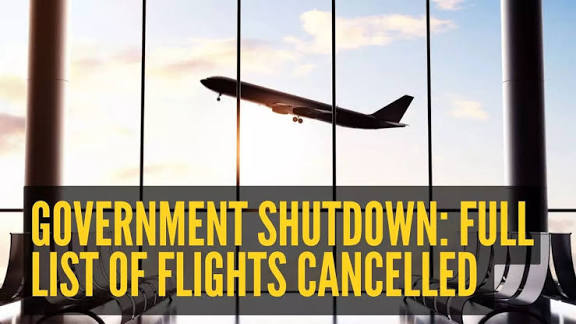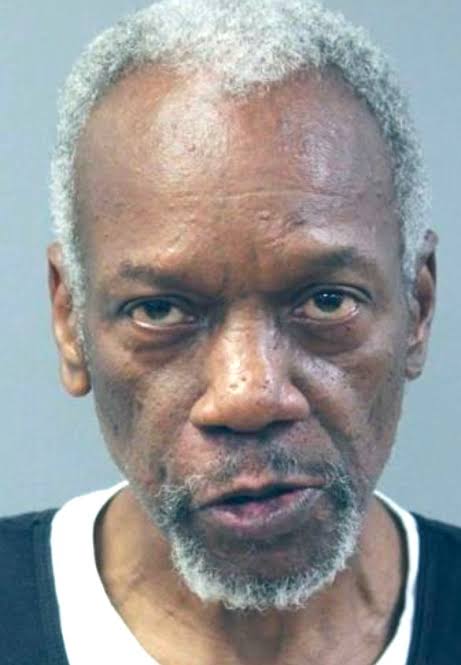Ouagadougou population 2025: pronunciation,people,country,meaning,safe

Its population in 2019 is 2,415,266. The city’s name is often shortened to Auga. Today we will discuss about Ouagadougou population 2025: pronunciation,people,country,meaning,safe
Ouagadougou population 2025: pronunciation,people,country,meaning,safe
Nestled in the heart of West Africa, the city of Ouagadougou serves as the political, cultural, and economic centre of Burkina Faso. In 2025, it stands at a pivotal moment: experiencing rapid population growth, evolving urban dynamics, and pressing questions about safety and meaning for its residents and visitors alike. This article explores Ouagadougou’s population in 2025, its people, the meaning of its name, pronunciation, and how safe the city is in its current context.
Name and Pronunciation

The city’s name — Ouagadougou — may look challenging, but here’s how to pronounce it:
-
Pronunciation: /wa-ga-du-gu/ (roughly “wah‑ga‑doo‑goo”).
-
Locals often shorten it colloquially to “Ouaga” (/wa‑ga/).
Meaning and etymology:
-
The name “Ouagadougou” comes from the language of the local Mossi people, the dominant ethnic group in the region.
-
A frequently cited interpretation is that it means “where people get honour” or “the home of honourable people” (in Mossi: Wogodogo).
-
Another interpretation is “you are welcome here” or “the place where people are welcomed.”
-
Regardless of the exact original wording, the name reflects its historical importance as a gathering place, trade centre, and seat of the Mossi kingdom.
Thus, Ouagadougou is not just a name—it carries cultural significance, rooted in hospitality, honour, and history.
Country Context: Burkina Faso
Before focusing on the city, a quick context check:
-
Burkina Faso is a land‑locked country in West Africa, neighbouring Mali to the north and west, Niger to the east, and others like Côte d’Ivoire, Ghana, Togo, and Benin.
-
Its capital is Ouagadougou, making the city the central node in national governance, culture, and economics.
-
The population of Burkina Faso in 2025 is estimated to be about 24.2 million people.
-
Urbanisation and demographic change are major themes for the country, with Ouagadougou playing a leading role.
Population of Ouagadougou in 2025
Current Number
-
The estimated population of the Ouagadougou metropolitan area in 2025 is about 3,520,820 people.
-
Another dataset gives a figure of about 3,521,000 for the metro area, showing a growth rate of approximately 4.82% per year.
Growth Trend
-
The city has been growing rapidly: from about 3,056,000 in 2022 to over 3.2 million in 2023, reaching the 3.52 million mark by 2025.
-
One report highlights that over ten years, Ouagadougou gained more than one million inhabitants — “+1,020,820 habitants en 10 ans” — which is described as a record‑level growth in Africa.
Implications of the Growth
-
Rapid population increase places tremendous pressure on urban infrastructure: roads, housing, water, sanitation, schools, and health services.
-
Urban sprawl is expanding; the built‑up area has grown significantly as the city expands outward.
-
Services and planning struggle to keep up, including transport congestion and increasing demand for utilities.
-
From a demographic perspective, this growth underscores the major urban transition taking place in Burkina Faso and similar countries in the Sahel region.
The People of Ouagadougou
Ethnic and Cultural Composition
-
The majority ethnic group in Ouagadougou is the Mossi (over 50 %).
-
Other ethnic groups present in the city include the Senufo, Gurunsi, Fulani (Peul), Bobo, Lobi, and others.
-
As the capital, Ouagadougou attracts people from across the country, so there is a diverse mix.
-
Language: French is the official administrative and educational language; however, many residents speak native languages of the Sudanic family.
Religion
-
More than 63% of the population are Muslim; the remainder comprise Christians and practitioners of traditional animistic religions.
-
Many residents combine religious practices (for example, local animistic traditions blended with Islam or Christianity) in a way characteristic of West African spiritual pluralism.
Economy and Daily Life
-
The city is a hub for commerce, small‑scale industry, government administration, and services.
-
Urban agriculture, informal markets, and transport (motorbike taxis, micro‑businesses) play big roles in the everyday economy.
-
Migration from rural areas (driven by factors such as drought, land degradation, and declining subsistence farming) adds to the city’s workforce and informal sectors.
-
A youthful population is typical: Burkina Faso has a median age of 17.7 years.
Meaning and Role of Ouagadougou
As Capital City
-
Ouagadougou is the political heart of Burkina Faso: government ministries, foreign embassies, major institutions.
-
It is the cultural centre: the biennial film festival FESPACO (Pan‑African Film and Television Festival of Ouagadougou) is held here, giving the city continental significance.
-
As a trade and transport hub, rail and road networks link it to neighbouring regions; infrastructure development has been a government priority.
Urban Symbolism
-
The name of the city reflects its historic role as a centre of Mossi power and a locus of gathering.
-
Rapid population growth and urban expansion make Ouagadougou a case study of urbanisation in the Sahel: how cities evolve under demographic, environmental, and economic pressure.
-
Its role in national identity: for many Burkinabè, Ouagadougou is emblematic of modern Burkina Faso—its hopes, challenges, and transitions.
Is Ouagadougou Safe?
Safety is a critical concern for travellers, residents, and urban planners alike. The situation is complex and changes rapidly, so one must take a nuanced view.
Security Situation
-
Ouagadougou is generally safer than rural or border zones in Burkina Faso, but it still faces threats from street crime, theft, and potential terrorist activity.
-
Types of risks include:
-
Street crime and opportunist theft: purse snatching, backpack thefts, and motorbike thefts, especially near markets or at night.
-
Vehicle crime / road attacks: outside the city, on main roads, there have been incidents involving armed groups.
-
Terrorist / armed group threat: Burkina Faso faces security challenges from jihadist groups, particularly in border and rural areas.
-
Kidnapping: criminal groups occasionally target high-profile or unsuspecting individuals.
-
Practical Safety Tips
-
Stay within well‑known, secure areas; avoid remote suburbs after dark.
-
Avoid walking alone at night and keep valuables out of sight.
-
Use reputable transport services; know your route.
-
Stay updated on local news and advisories; the situation can change quickly.
-
Residents should secure homes, avoid flashy displays of wealth, and stay informed about local security conditions.
Summary of the Safety Landscape
-
Ouagadougou is relatively safer than much of the country but is not “safe” in absolute terms.
-
Awareness, precaution, and local knowledge are critical for navigating daily life in the city.
Urban Challenges & Opportunities
Infrastructure & Housing
-
Population growth pressures housing, roads, and public infrastructure. Informal settlements are expanding, and services may lag demand.
Transport & Mobility
-
Commuting from peri‑urban areas to the city centre leads to congestion and long travel times. Public transport systems struggle to keep up with demand.
Environment & Climate
-
Burkina Faso faces drought, desertification, and climate change pressures. Urban planning must integrate water supply, green spaces, and sustainable design.
Demographic Opportunity
-
A youthful population offers a demographic dividend if education and employment opportunities are adequate.
-
Cultural vibrancy: festivals, markets, and arts contribute to tourism and creative industries.
Looking Ahead: Future Prospects
-
If growth continues at ~4.8% annually, Ouagadougou’s population could rise significantly in the next decade.
-
Urban governance will be key: managing infrastructure, housing, transport, and environmental resilience.
-
Safety and security will remain pivotal for investment, migration, and tourism.
-
Balancing informal growth with formal planning will determine residents’ quality of life.
-
The city’s name, symbolizing “honourable people,” can also be seen as a challenge: providing dignity, services, and security to its growing populace.
Summary
In 2025, Ouagadougou stands at the intersection of tradition and transformation. Its population—around 3.5 million—is growing quickly, driven by natural increase and migration. The people are diverse but anchored in Mossi cultural heritage; the meaning behind the city’s name evokes welcome and dignity. Yet alongside the promise lie serious challenges: infrastructure strain, security risks, and urban sprawl. For anyone studying West African urban dynamics, Ouagadougou offers a vivid example of growth under pressure. For travellers, residents, and policymakers, the city demands respect for its rhythms, awareness of its risks, and appreciation of its potential.
How useful was this post?
Click on a star to rate it!
Average rating 0 / 5. Vote count: 0
No votes so far! Be the first to rate this post.
About the Author
usa5911.com
Administrator
Hi, I’m Gurdeep Singh, a professional content writer from India with over 3 years of experience in the field. I specialize in covering U.S. politics, delivering timely and engaging content tailored specifically for an American audience. Along with my dedicated team, we track and report on all the latest political trends, news, and in-depth analysis shaping the United States today. Our goal is to provide clear, factual, and compelling content that keeps readers informed and engaged with the ever-changing political landscape.




